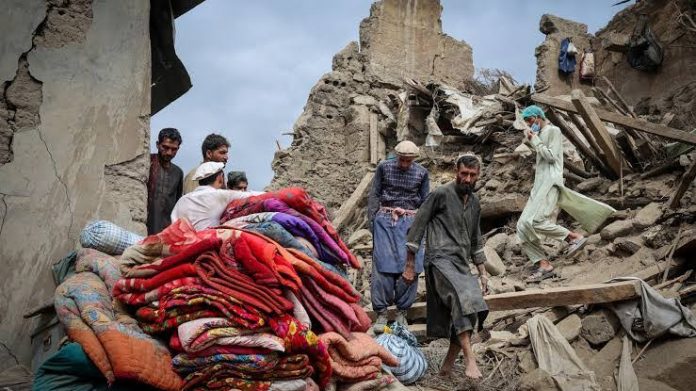News Investigators/ The UN has sent relief teams to northern Afghanistan after a powerful 6.3 magnitude earthquake struck overnight on Monday, two months after a massive quake devastated the east of the country.
No fewer than 15 people have been reported killed, while 320 were injured, according to initial figures from the country’s public health ministry.
Health Ministry spokesman Sharafat Zaman, however, said that casualty numbers could change as more information becomes available.
The U.S. Geological Survey (USGS) said the quake hit the northern province of Balkh at a depth of 28 kilometres.
Head of the World Health Organisation (WHO) Dr Tedros Ghebreyesus said in a statement on Monday that first responders from the UN agency were already “on the ground” to support care for the injured.
“What began as an acute emergency has now evolved into a displacement crisis, where families endure extended stays in temporary settlements amid escalating health risks,” WHO said.
In addition to a lack of access to safe drinking water for displaced families, the UN agency warned of widespread open defecation and poor access to health services for women in particular, owing to “the absence of female staff and the lack of privacy.”
Maternal and newborn health needs remain critical for those impacted by the August quake amid deep funding cuts for aid work, WHO noted, in addition to immunisation, noncommunicable disease case management and mental health and psychosocial support.
The UN World Food Programme (WFP ) also highlighted its support for affected communities and the emergency response as needs appraisals began.
Reports indicate that the earthquake struck near the city of Mazar-i-Sharif at around 1 am local time, causing buildings to collapse on those sleeping inside.
Footage posted on social media from the city’s Shrine of Hazrat Ali – also known as the Blue Mosque – showed people stepping around rubble on the ground of the site revered by Shiah Muslims.
Although people have been reported killed in the worst-hit mountainous province of Samangan, initial assessments carried out from the air indicated fewer signs of damage than at first feared.
The UN flyover, conducted with the help of the Swiss authorities, also showed no signs of mass displacement that might have been expected had the earthquake been more destructive.
“We went over the main populated areas where most settlements are in the earthquake affected area.
“Thankfully, we saw very little widespread devastation…compared to the devastating scenes we saw in Kunar just a few weeks ago,” Richard Trenchard, the UN’s acting Humanitarian Coordinator in Afghanistan, said.
The new crisis follows a magnitude 6.0 earthquake on August 31 that swept away thousands of houses and vital infrastructure in eastern Afghanistan’s Kunar province.
The disaster uprooted hundreds of thousands of people and left half a million requiring urgent medical assistance.
On the ground in Afghanistan, UN agencies and partners say that collaboration and local leadership will be crucial to boost the recovery response.
Efforts are underway to pre-position supplies, mobilise surveillance teams to prevent disease outbreaks and prepare damaged hospitals to resume operations.
Afghanistan is prone to earthquakes because it sits on numerous tectonic fault lines that often cause massively damaging shallow tremors.
To improve the resilience of vulnerable communities to these repeated shocks, specialised UN agency, UN Habitat, said trained Afghan masons using local construction techniques, are one important way to help save lives.
“While everybody is still assessing the impact of the earthquake, looking at casualties, it is important that people become aware that earthquakes will happen in Afghanistan again and again,” Stephanie Loose, Senior Human Settlements Officer, said
“It’s important to look at materials, but also construction methods that are intrinsic to the cultural heritage of the country,” Loose added.
“Bringing in new materials and construction methods which are not close to the people and where people cannot be trained is not going to help the country.
” We need to act now and make sure that the cultural heritage is preserved regarding the settlement structures when rebuilding,” Loose said.
NAN

